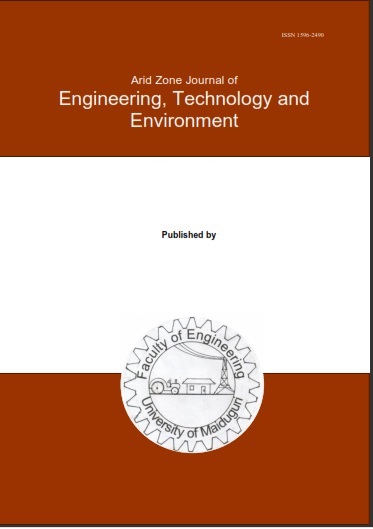Abstract
This study investigated the effects of drying temperature on the nutritional and phytochemical components of Gongronema latifolium (Bush Buck) leaves; a widely spread edible indigenous leafy vegetable of West Africa. The leaves were dried at room temperature (RTD), in the open sun (OSD) and at 30, 40, 50, 60 and 70 °C in a convective oven (OD). Proximate and phytochemical analyses were done on the products of each OD temperatures, while for RTD and OS drying, the tests were done at their equilibrium moisture content (????????) of the ambient. Statistical analysis was done using MATLAB. The parameters of the fresh leaves with 82.95% moisture content served as the control. Drying decreased the product ???????? to 12.95%, 7.65%, 6.95%, 5.79% and 5.03% in the listed order of the drying temperatures. The proximate and phytochemical contents increased with drying temperature. 70 °C drying temperature gave the highest contents of ash (16.35%), fibre (27.85%), protein (22.70%), carbohydrate (32.84%) and fat (2.42%) in the dried leaves. Same went for the phytochemicals: alkaloid (4.50%), flavonoid (3.92%), saponin (1.46%), tannin (1.39%) and terpenoids (2.72%). Second order polynomial models fitted the data well and gave coefficient of determination (R2) of 0.789 for fibre, 0.869 for fat, 0.895 for protein, 0.921 for ash, 0.923 for terpenoids, 0.941 for moisture, 0.943 for flavonoids, 0.982 for saponnins, 0.987 for alkaloids and 0.992 for tannins content. These results show that there are strong relationships between the proximate and phytochemical composition and the drying temperatures. At their corresponding temperatures, OSD yielded the highest value of saponins (1.45%), tannins (0.64%) and terpenoids (2.45%), RTD gave highest value of alkaloids, flavonoids, carbohydrate (58.38%), protein (17.07%) and fat (1.10%), while OD yielded the highest fibre content (28.32%). The results show that drying methods and conditions should be chosen based on the intended use of the products.

This work is licensed under a Creative Commons Attribution-NonCommercial-NoDerivatives 4.0 International License.
Copyright (c) 2025 ARID ZONE JOURNAL OF ENGINEERING, TECHNOLOGY AND ENVIRONMENT

